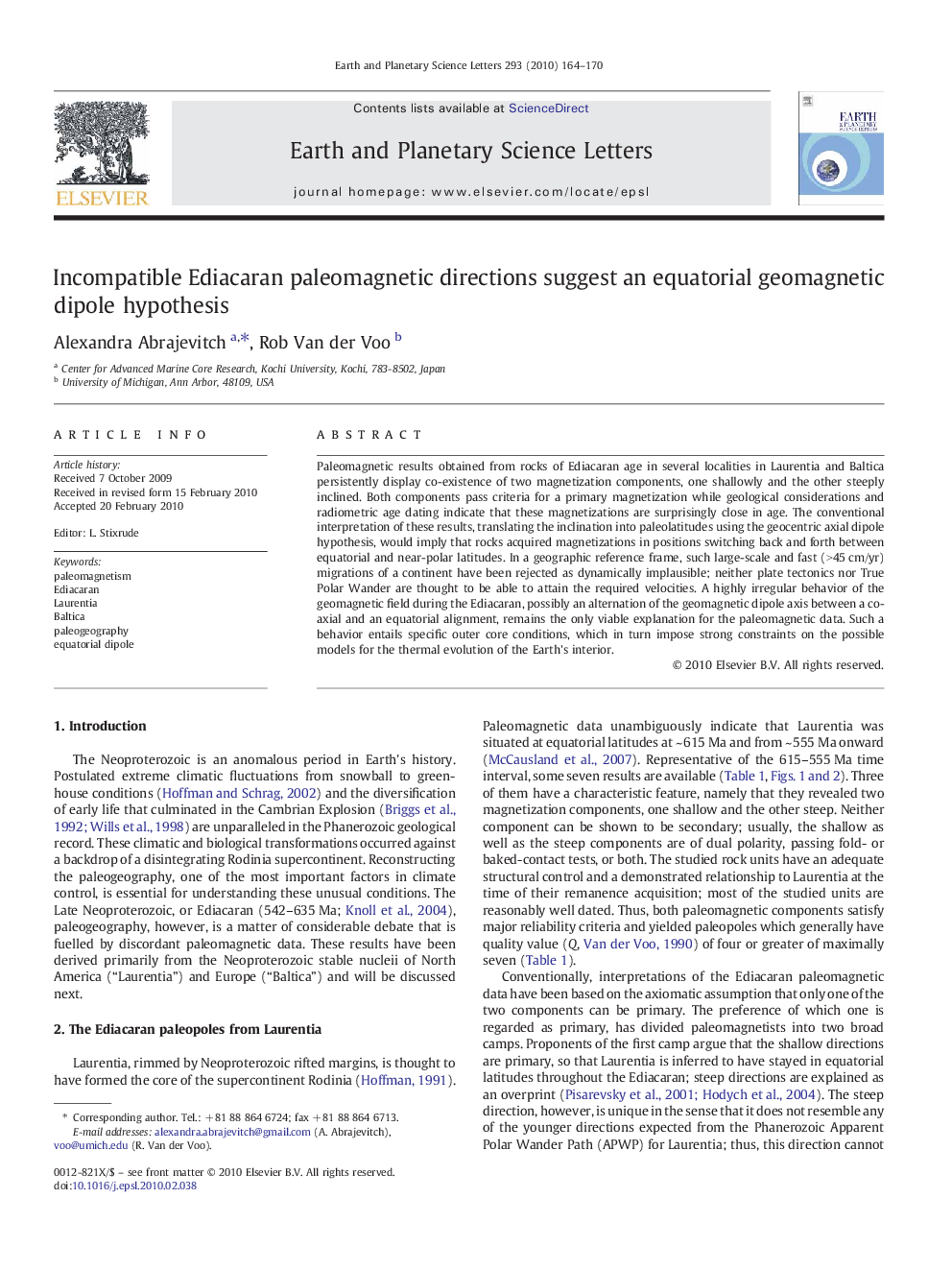| Article ID | Journal | Published Year | Pages | File Type |
|---|---|---|---|---|
| 4678543 | Earth and Planetary Science Letters | 2010 | 7 Pages |
Abstract
Paleomagnetic results obtained from rocks of Ediacaran age in several localities in Laurentia and Baltica persistently display co-existence of two magnetization components, one shallowly and the other steeply inclined. Both components pass criteria for a primary magnetization while geological considerations and radiometric age dating indicate that these magnetizations are surprisingly close in age. The conventional interpretation of these results, translating the inclination into paleolatitudes using the geocentric axial dipole hypothesis, would imply that rocks acquired magnetizations in positions switching back and forth between equatorial and near-polar latitudes. In a geographic reference frame, such large-scale and fast (>45Â cm/yr) migrations of a continent have been rejected as dynamically implausible; neither plate tectonics nor True Polar Wander are thought to be able to attain the required velocities. A highly irregular behavior of the geomagnetic field during the Ediacaran, possibly an alternation of the geomagnetic dipole axis between a co-axial and an equatorial alignment, remains the only viable explanation for the paleomagnetic data. Such a behavior entails specific outer core conditions, which in turn impose strong constraints on the possible models for the thermal evolution of the Earth's interior.
Related Topics
Physical Sciences and Engineering
Earth and Planetary Sciences
Earth and Planetary Sciences (General)
Authors
Alexandra Abrajevitch, Rob Van der Voo,
